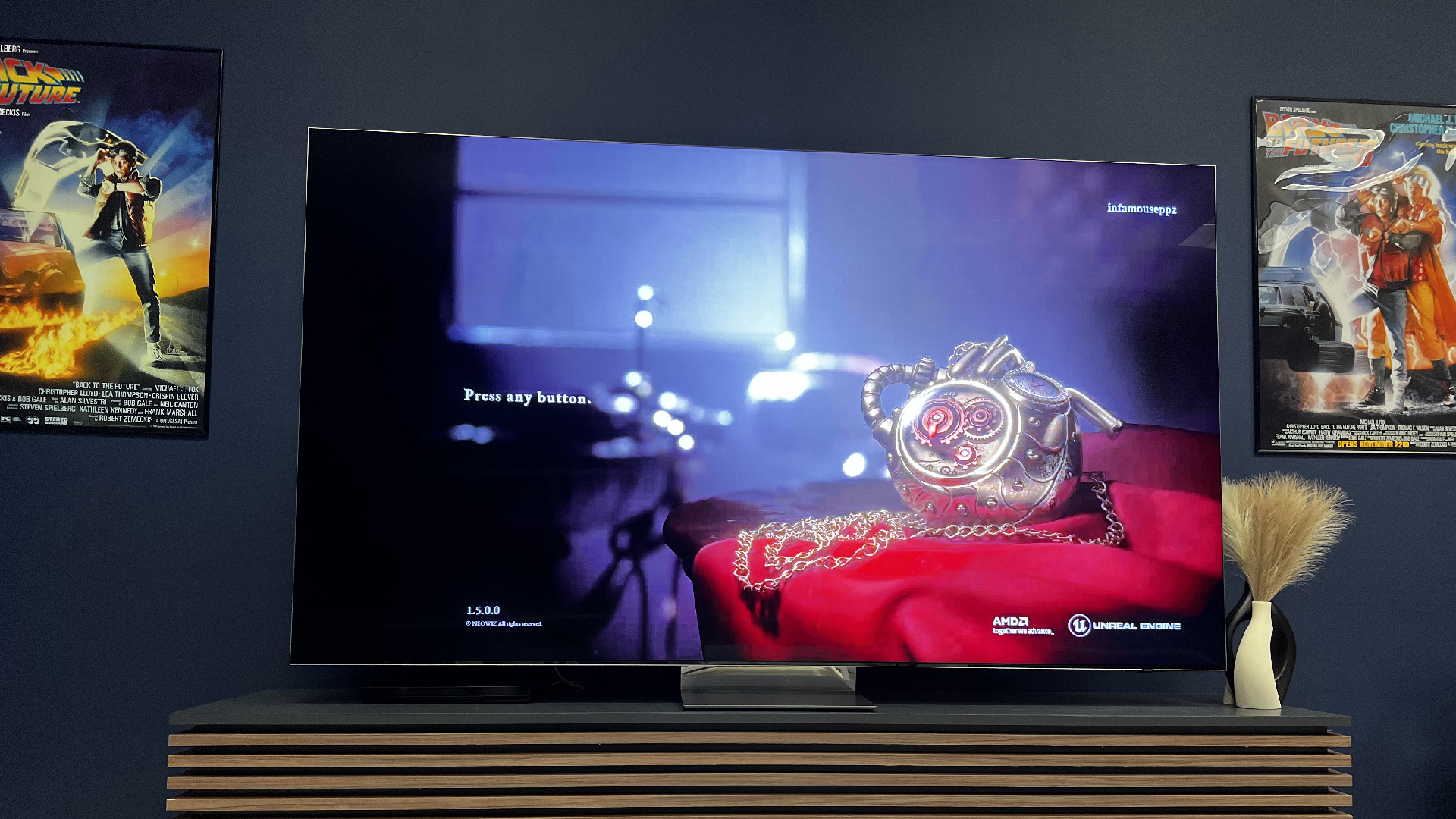
In the race to become one of the best TVs, the Samsung QN900D 8K QLED now supports a 240Hz refresh rate at 4K resolution, making it ideal for PC gamers looking to get creative with their setup.
If some of the best gaming monitors can do it, why does this matter for TVs? Well, some gamers are looking for a bigger screen that can also serve as a home theater. While the majority of the most recent flagship-level TVs max out at 4K/144Hz, most TVs don't even reach that specification (as is the case for a large portion of the 2024, US-based market). Even the more recent Panasonic Z95A OLED caps at 144Hz.
Some TVs, like a few in the TCL 2024 TV lineup, can technically reach 240Hz, but they do so at a limited resolution, often 1080p. TCL’s Game Accelerator 240, as it’s called, allows its TVs to bump past that 144Hz mark using Dual Line Gate (DLG), though it’s not quite the same as what’s happening on the Samsung QN900D.
Thanks to its NQ8 AI Gen3 processor, which can only be found on this display, the QN900D can reach that 4K/240Hz mark — but there’s a catch. You’ll need a device capable of handling that signal bandwidth, called Display Stream Compression (DSC), and it’s only available on select Apple silicon and Nvidia GPUs.
A gaming beast at a cost

With this upgrade, the Samsung QN900D now proves itself as one of the best Samsung TVs, as well as one of the best gaming TVs, too.
Of course, it's not quite plug and play. You won't be able to use just any option among the best gaming PCs or even the best laptops either, as you'll need a source device capable of supporting the immense bandwidth required for 4K/240Hz over HDMI, specifically one with DSC.
DSC allows the signal passing between a device and the QN900D to be compressed at virtually lossless visual speeds. The only devices on the market today with DSC support are Nvidia's RTX 4080 and RTX 4090 graphics cards, as well as several Apple chipsets, including the M2 Pro, M2 Max, M2 Ultra, M3 Pro, and M3 Max processors.
To be clear, even the Nvidia RTX 4090, one of the best GPUs in the market, still can't hit that 4K/240Hz threshold with ease. Less-intensive games, like Diablo 4 and F1 2020, are really the only experiences you'll see at that mark. For the most part, 4K content at 240Hz is intended for eye strain mitigation and professional video workflows. (So don't get your hopes up about the PS5 Pro, either.)
The era of 4K/240Hz OLED TVs
Is the advent of 4K/240Hz support signaling that we might soon see some of the best OLED TVs adopt the feature? It's hard to say. Although popular for monitors, 240Hz is, as outlined above, a bit of a stretch for most devices.
Given that 240Hz at 4K capabilities were largely touted at CES 2024, the potential is there for LG, Samsung, or even Sony to bring to market a flagship OLED display with the function — and we're only a few months away from the next big tech extravaganza in Las Vegas.
Even if announced, a display of that magnitude probably would cost a hefty penny. The Samsung QN900D itself, an 8K display built on a QLED design, comes in at a whopping $4,499 (and that's on discount via Samsung's own store page). We'll just have to wait and see if CES 2025 provides some exciting new bounds in display technology, but 144Hz seems to be the gold standard for some time.







